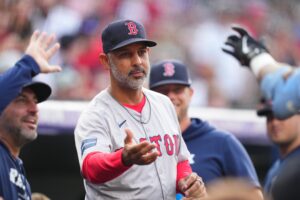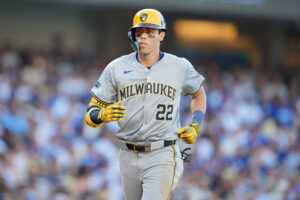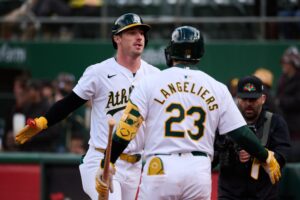July 20, 1969, was a day like any other save for one thing, Neil Armstrong and Buzz Aldrin landed on the moon. After spending the previous day in lunar orbit, Armstrong and Aldrin climbed into the lunar module Eagle and headed for the moon. Leaving fellow astronaut Michael Collins orbiting in the command module Columbia, Armstrong and Aldrin approached the Sea of Tranquility on the lunar surface. Then at 1:17 PM. PT, Armstrong’s voice crackled to life over the radio, “Houston, Tranquility Base here. The Eagle has landed.” This was the first time that a human had grounded on another planet.
Alvin Dark: Baseball’s Nostradamus
Alvin Dark was the manager of the San Francisco Giants from 1961 through the 1964 season. Prior to a game in 1964, he was watching Gaylord Perry, a then untested pitcher in his third big league season, take batting practice. Standing next to Dark was reporter Harry Jupiter. Perry, who would go on to be a two-time Cy Young award winner and Hall of Fame inductee, was making good contact during his BP round, hitting a few home runs. Jupiter was impressed by Perry’s skills and commented to Dark that Perry might even be able to put one out during a game.
Unimpressed, Dark responded with, “Mark my words, a man will land on the moon before Gaylord Perry hits a home run.”
Following the 1964 season, the Giants fired Dark after barely missing the NL pennant. In 1965, the Cubs hired Dark as their third-base coach. He lasted one season in Chicago. Following Chicago, he spent two seasons in Kansas City as the manager of the Athletics. Then in 1968, the Cleveland Indians hired Dark as their manager. He stayed in Cleveland for the next four seasons.
Gaylord Perry
After Dark’s departure from San Francisco, Gaylord Perry hit his stride as a starting pitcher. He was a first-time All-Star in 1966 and finished 18th in MVP voting that same year. And by 1969, Perry was widely considered to be one of the best pitchers in the majors.
1969 was the first season of the Divisional Era. Both leagues had added two expansion teams (The San Diego Padres, and Montreal Expos in the NL and Seattle Pilots and Kansas City Royals in the AL) and then divided into two six-team divisions. The divisions consisted of an AL West and AL East as well as the NL West and NL East.
By the time that July 20, 1969, rolled around, the Los Angeles Dodgers were tied for first with the Atlanta Braves and the Giants were one game back in second place in the NL West. The Dodgers were visiting the Giants at Candlestick Park that day for game four of a four-game series. Los Angeles had won the first game of the series and then dropped the next two. Starting for the Dodgers that day was Claude Osteen and on the hill for the Giants was none other than Gaylord Perry.
Moon Landing
All 32,560 fans at Candlestick Park that day knew what was happening in the greater Solar System. Human beings were about to land on another planet for the first time in recorded history. And what better way to spend that time than at a baseball game?
In the top of the third inning, with the Dodgers ahead 3-0, the crowd at Candlestick was asked to stand and give a moment of silent thanks to the astronauts who had just landed on the moon. Thirty minutes later, in the bottom of the third, Gaylord Perry came to bat. There were two outs and nobody on. He waited for his pitch and finally got the fastball he was looking for. And thirty minutes after a man had landed on the moon, Perry hit the first home run of his career to deep center. And Alvin Dark, who was managing Cleveland at the time, had officially become Major League Baseball’s Nostradamus.
Main Photo:
Embed from Getty Images
Players Mentioned:






